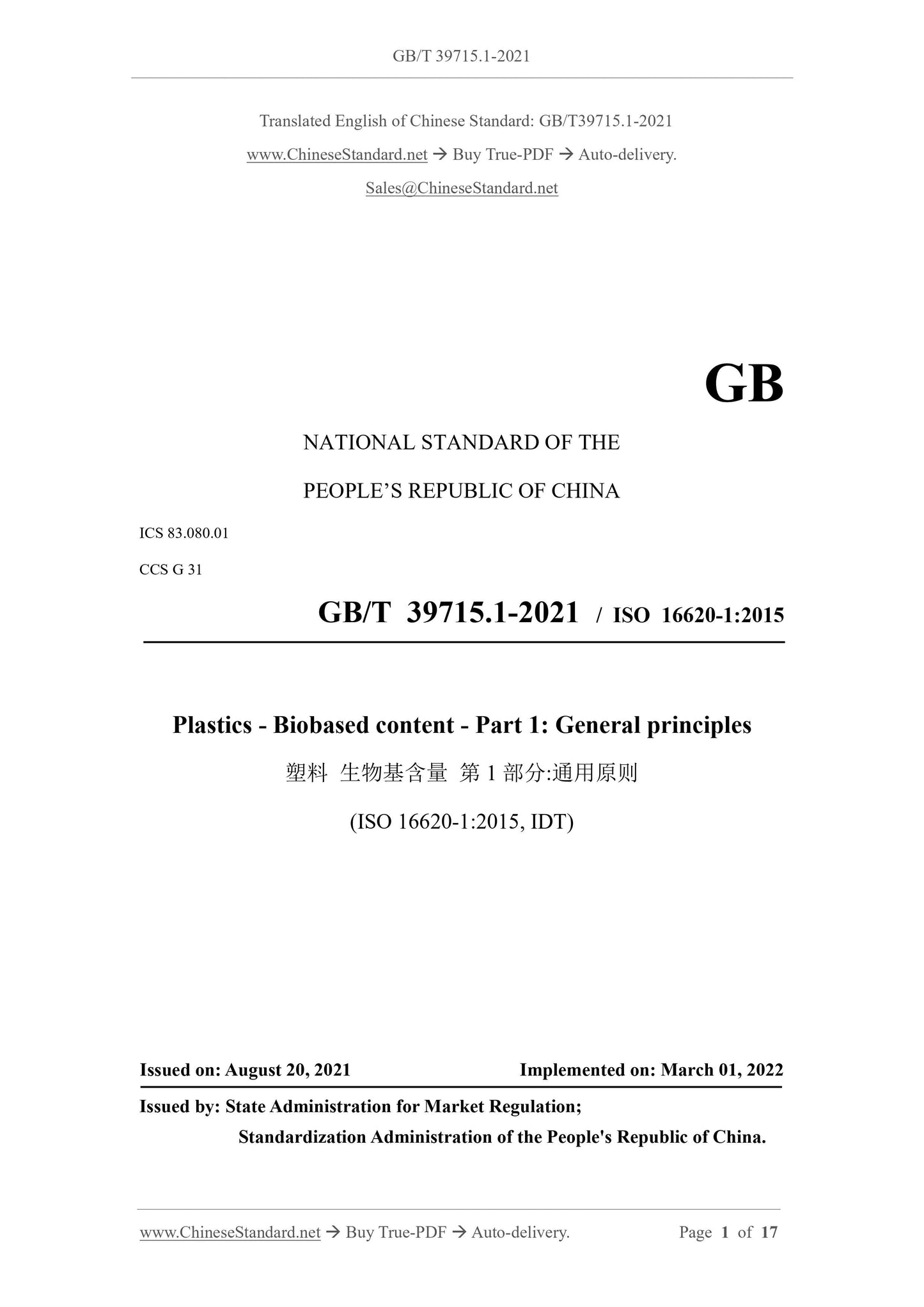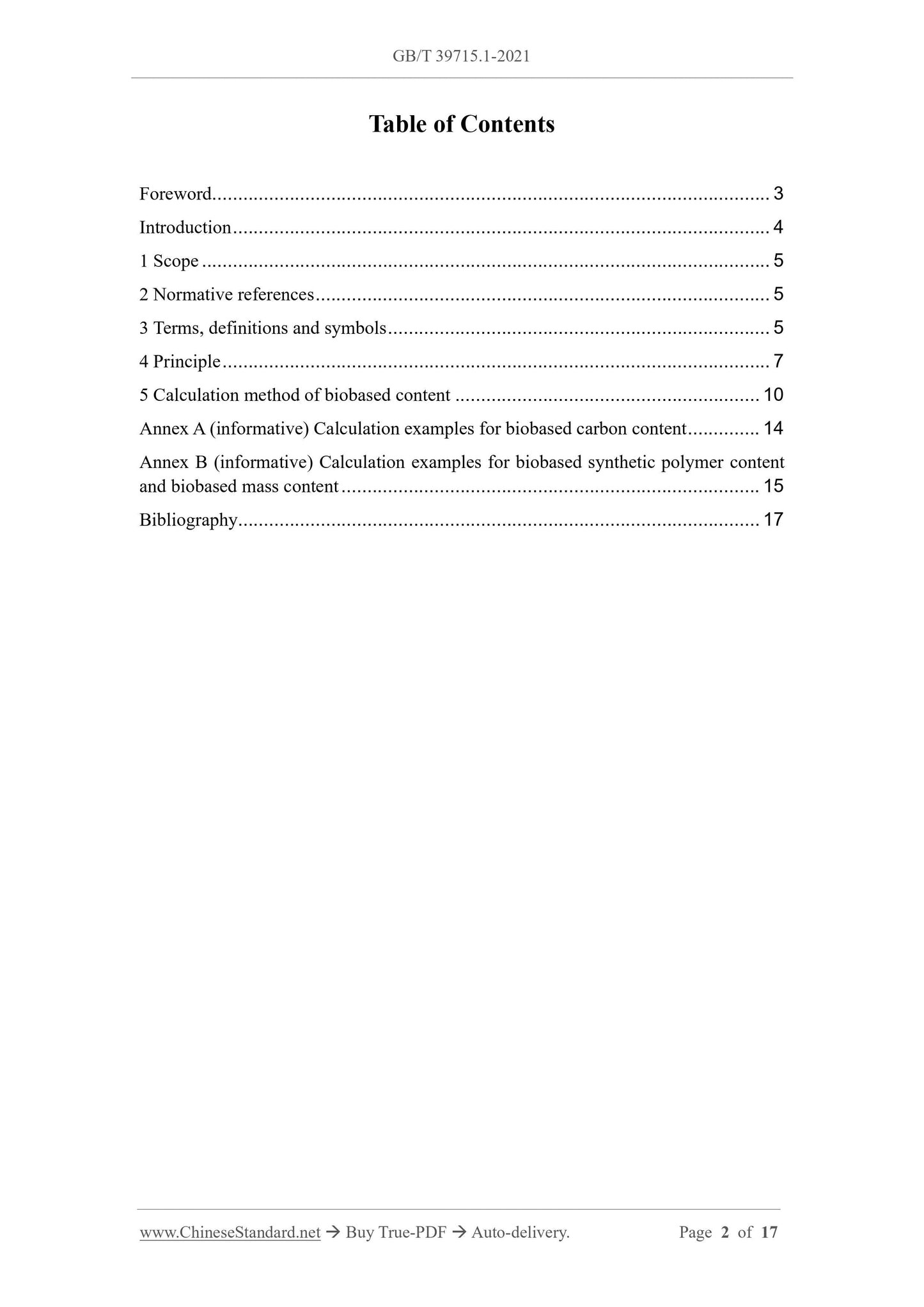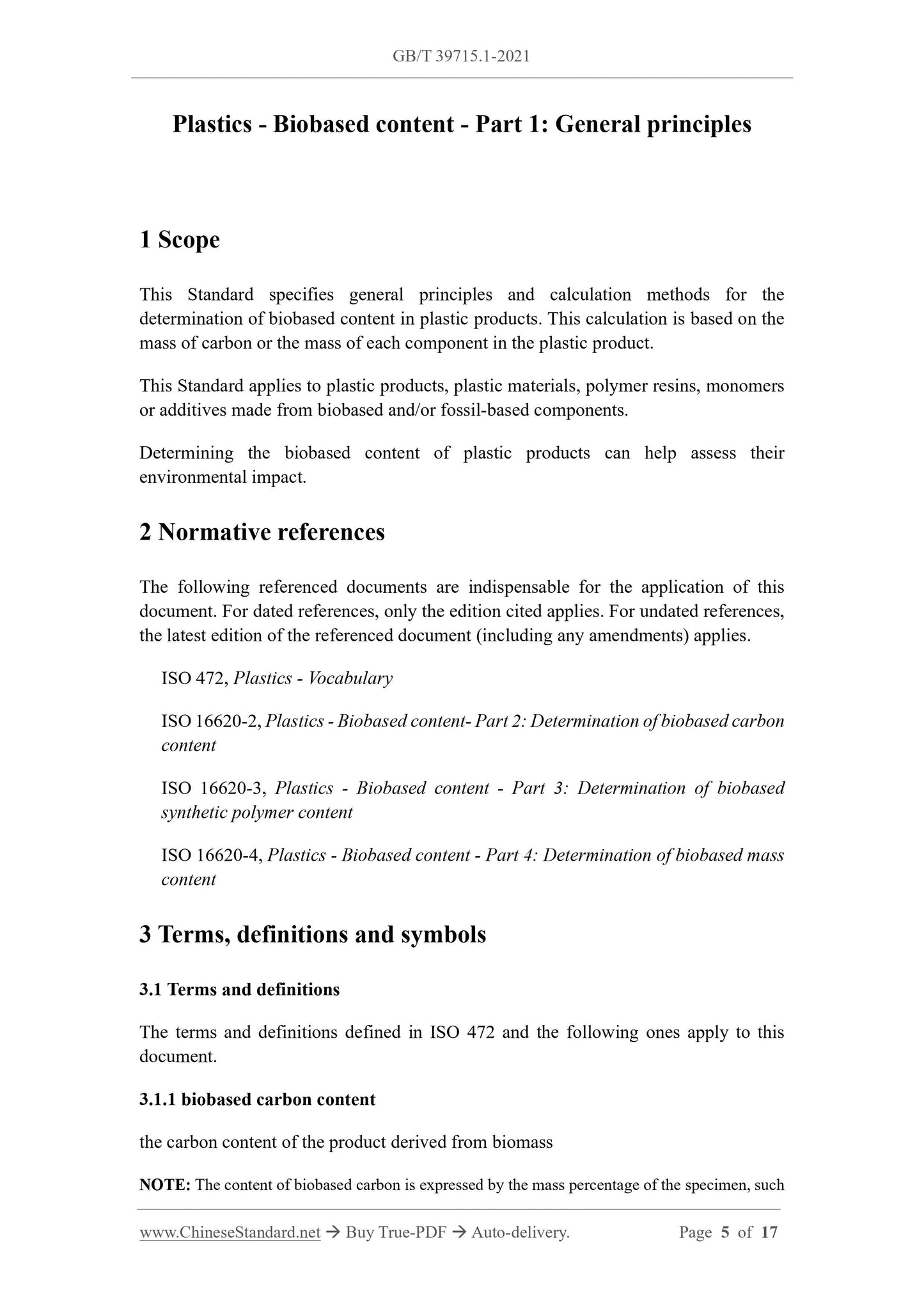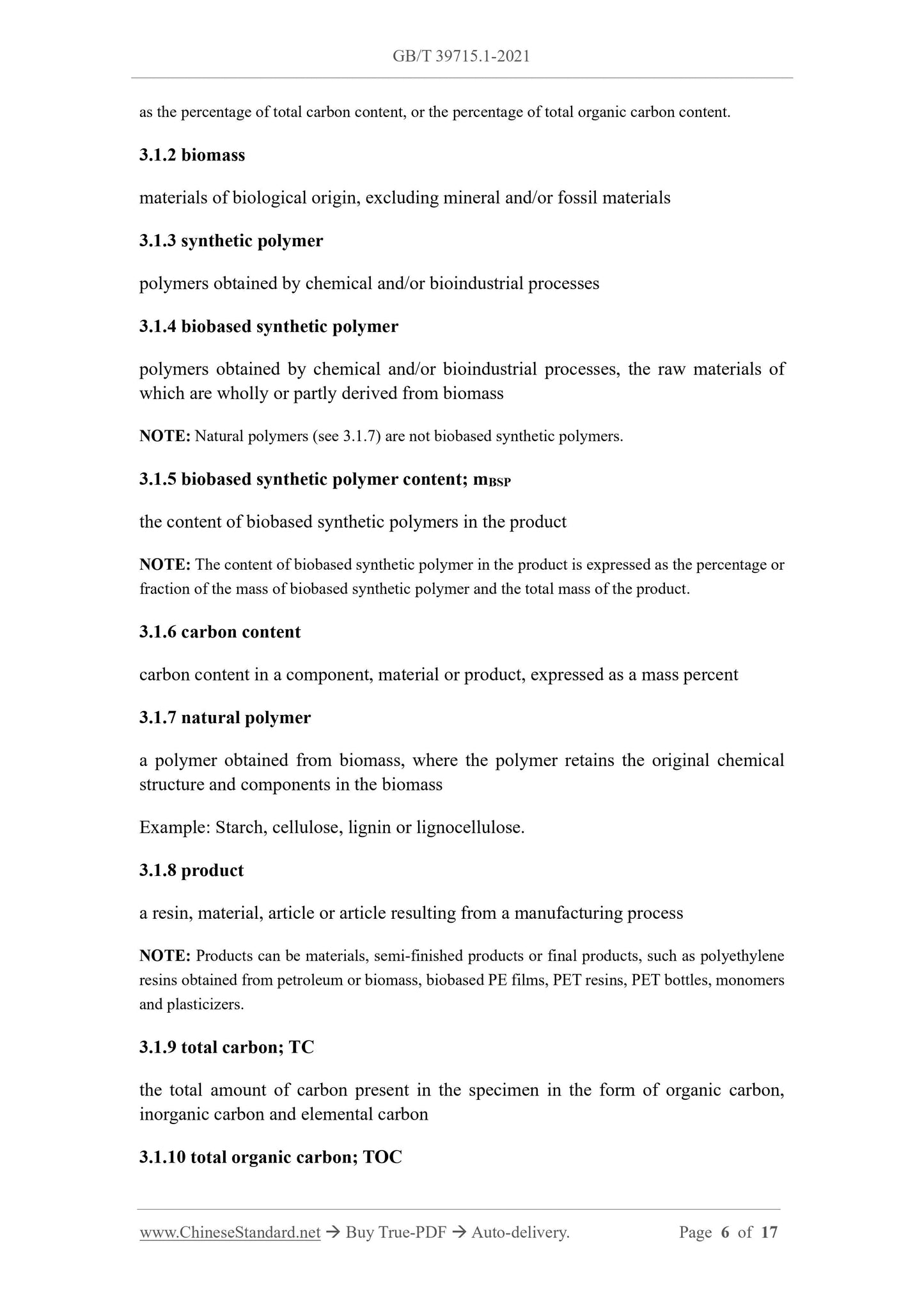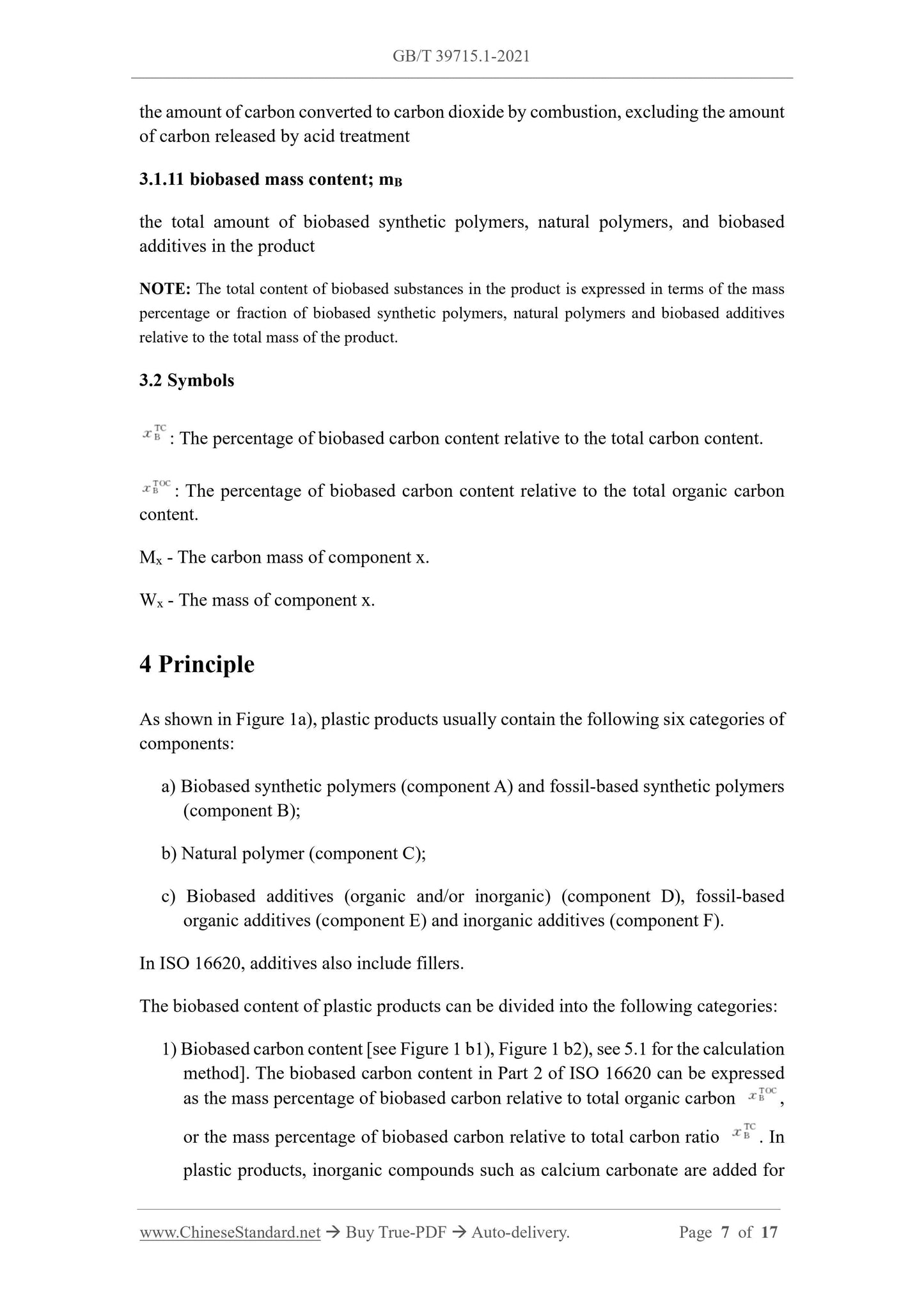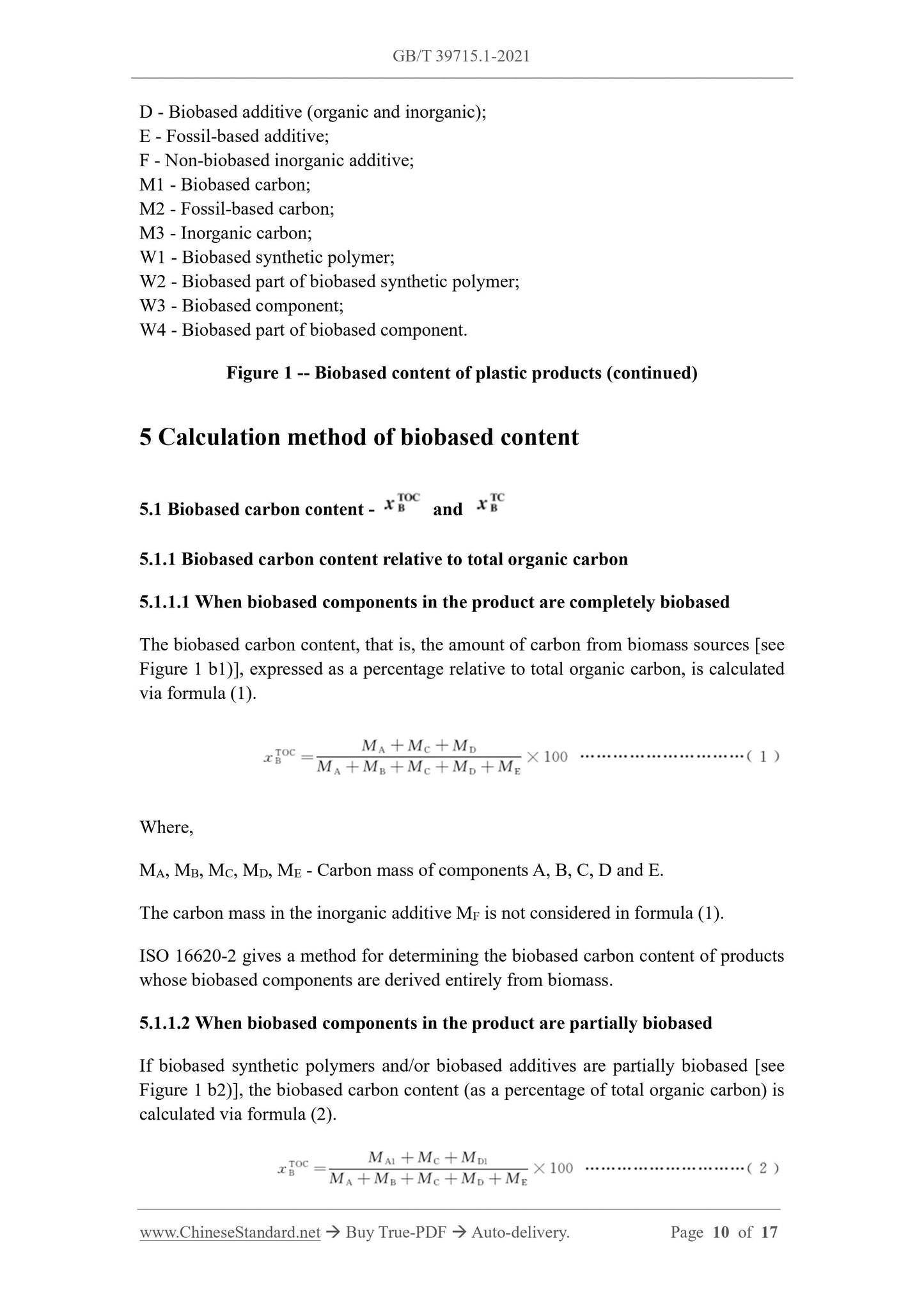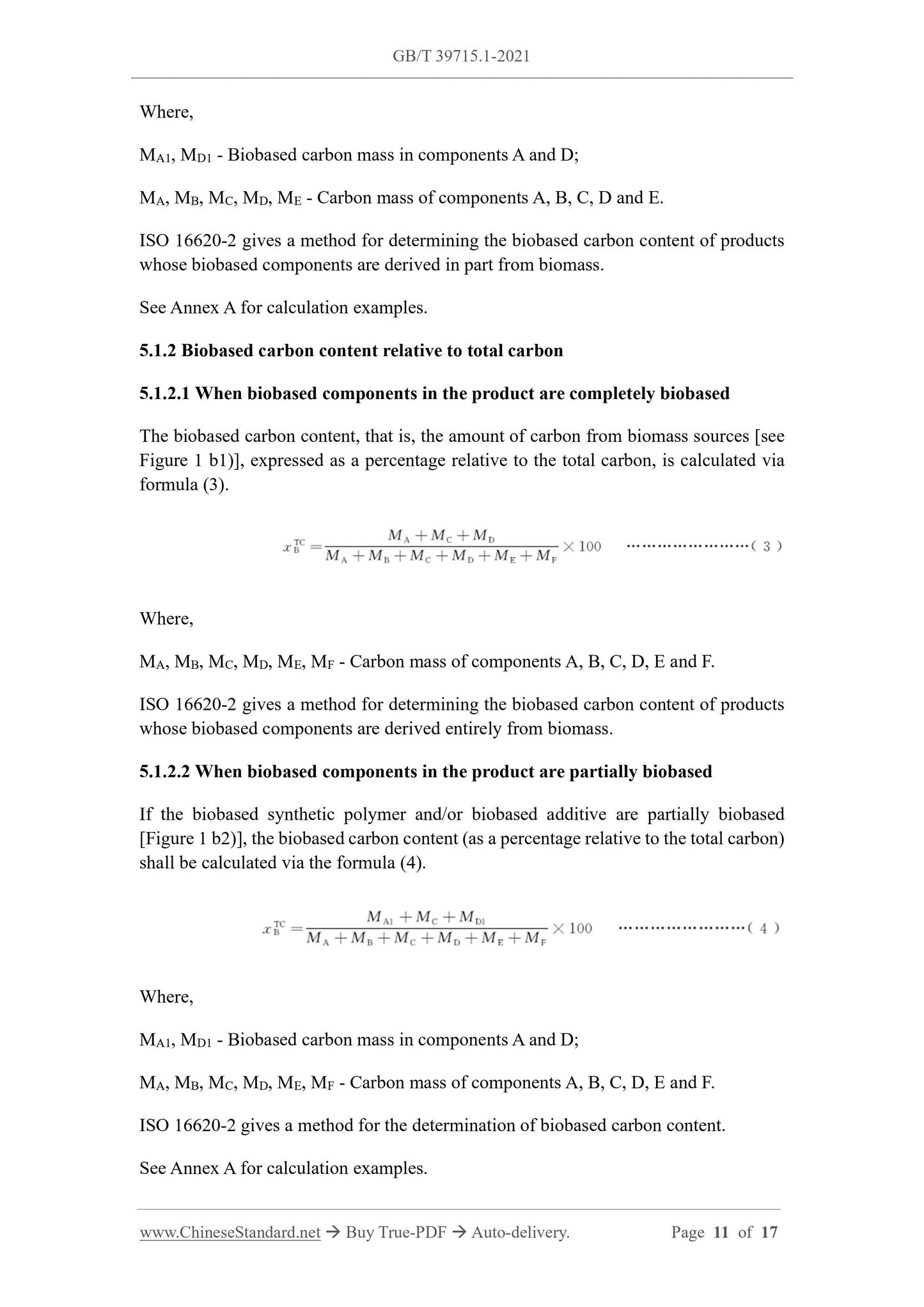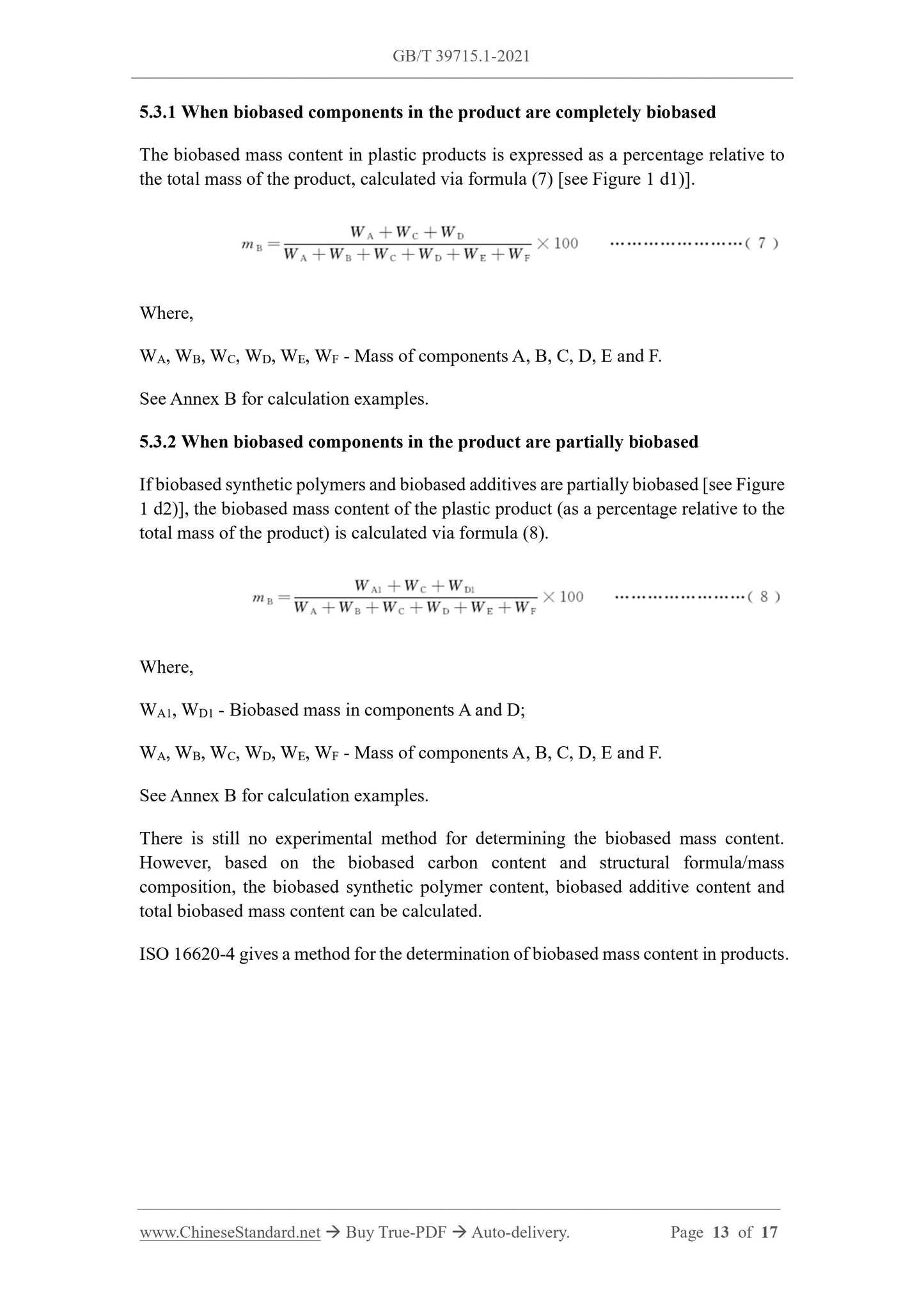1
/
of
8
www.ChineseStandard.us -- Field Test Asia Pte. Ltd.
GB/T 39715.1-2021 English PDF (GB/T39715.1-2021)
GB/T 39715.1-2021 English PDF (GB/T39715.1-2021)
Regular price
$230.00
Regular price
Sale price
$230.00
Unit price
/
per
Shipping calculated at checkout.
Couldn't load pickup availability
GB/T 39715.1-2021: Plastics - Biobased content - Part 1: General principles
Delivery: 9 seconds. Download (and Email) true-PDF + Invoice.Get Quotation: Click GB/T 39715.1-2021 (Self-service in 1-minute)
Newer / historical versions: GB/T 39715.1-2021
Preview True-PDF
Scope
This Standard specifies general principles and calculation methods for thedetermination of biobased content in plastic products. This calculation is based on the
mass of carbon or the mass of each component in the plastic product.
This Standard applies to plastic products, plastic materials, polymer resins, monomers
or additives made from biobased and/or fossil-based components.
Determining the biobased content of plastic products can help assess their
environmental impact.
Basic Data
| Standard ID | GB/T 39715.1-2021 (GB/T39715.1-2021) |
| Description (Translated English) | Plastics - Biobased content - Part 1: General principles |
| Sector / Industry | National Standard (Recommended) |
| Classification of Chinese Standard | G31 |
| Word Count Estimation | 14,189 |
| Issuing agency(ies) | State Administration for Market Regulation, China National Standardization Administration |
Share
